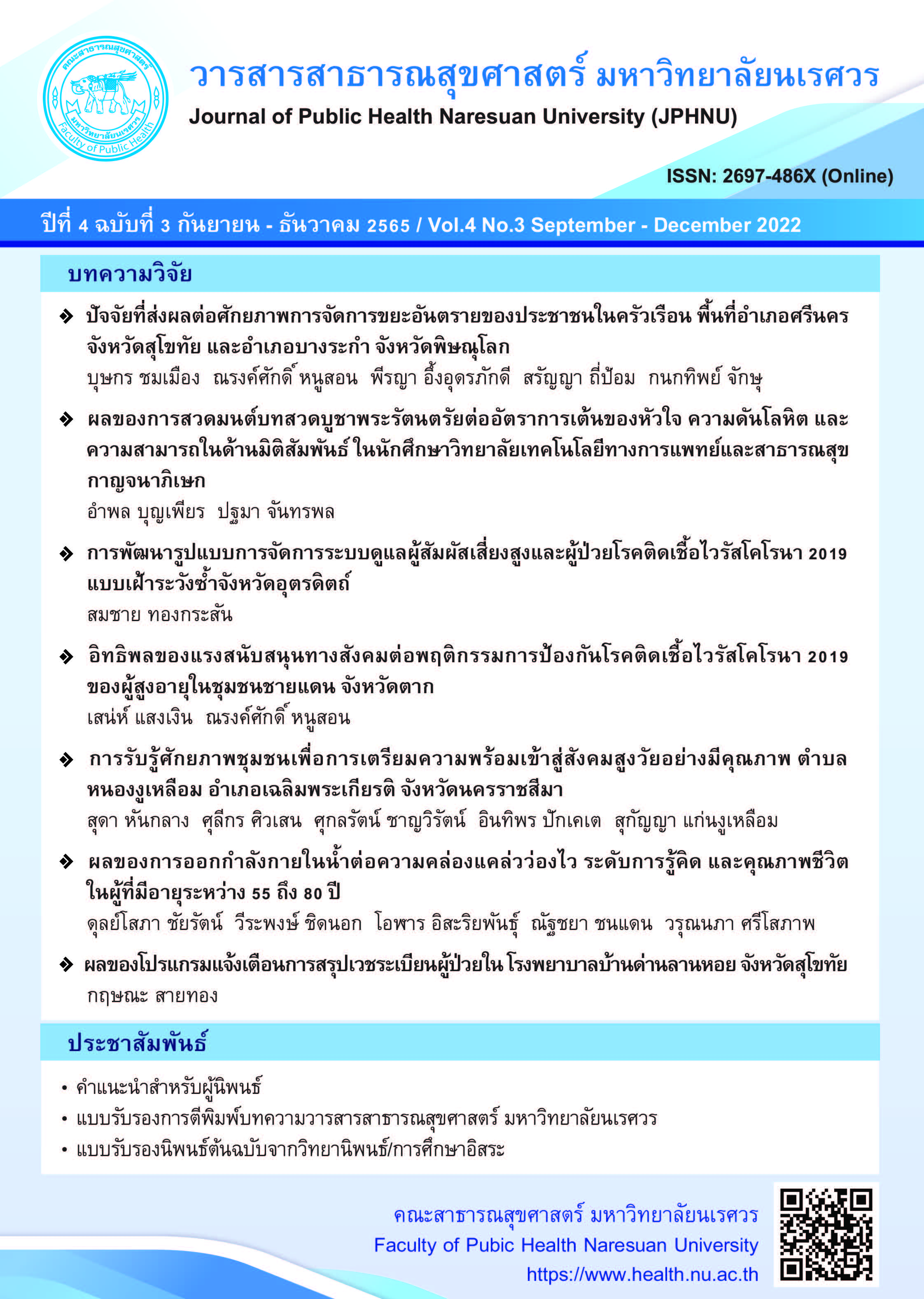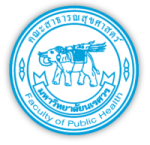Community potential perception for preparing the community in entering a quality aging society in Nong Ngu Lueam Subdistrict, Chaloem Phrakiat District, Nakhon Ratchasima Province
Keywords:
Preparing, Aging, Community potential, Aging societyAbstract
The purpose of this research was to study the perception of community potential and compare scores on the perceptions of community potential in preparing for a quality aging society of the sample which classified by personal factors and the participation of community activities. Data were collected from 122 participants, Nong Ngu Lueam Subdistrict, Chaloem Phrakiat District, Nakhon Ratchasima Province. The questionnaire was applied to assess the community's potential in 3 aspects: community participation, community leadership, and commitment. Data were analyzed using descriptive and inferential statistics; the Mann-Whitney-U test and the Kruskal-Wallis test.
Most of the sample perceived a high and a moderate level of community potential (66.4% and 33.6%, respectively). The perception of the potential of community leadership was difference between community members and village committee/community leaders (p-value < 0.05). In addition, the perception of community's potential differed according to the duration of participation in community activities. It was found that in the groups who spent time participating in other community activities, such as only when there was a group activity/group stage/merit event, the perception of community's potential was different from those who participated in 1-2 days per week and those who participated in 3 or more days per week (p-value < 0.05). Those who participated in community activities 3 or more days a week had higher perceptions of community commitment potential than those who participated one to two days a week and those who participated in other forms of participation (p-value < 0.05). Therefore, promotion of spending time together in the community, enhancing community engagement, and development of leadership among stakeholders is necessary for the readiness of entering in an aging society.
References
Best, J. W. (1977). Research in education. (3rd ed.). Engle Clift, NJ: Prentice-Hall.
Bua-in, N., Sutham, P., & Rattanpun, S. (2016). The development of potential community by the community master plan of Ban Chay Wat, Sawiat Subdistrict, Tha Chang District, Surat Thani Province. Suratthani Rajabhat Journal, 3(2), 193-212. (in Thai)
Chairat, P., & Nuntaboot, K. (2019). Community profile and community potential for elderly care in a sub-district in the north region of Thailand. Journal of Health Science, 28(5), 815-827. (in Thai)
Chuthamas, P. (2021). Factors affecting strength of Na Sa Ung Community according to sustainable development goals. Journal of North Bangkok University, 10(1), 1-10. (in Thai)
Department of Older Persons (DOP). (2022). Statistics of the elderly. Retrieved July 30, 2022, from https://www.dop.go.th/th/know/side/1/1/1159. (in Thai)
Jeedang, J. (2012). Potential of community strength: A comparative study of Bann Wangpong Muangkaew Sub-district and Bann Thawangtong Maerimtai Sub-district, Maerim District, Chiangmai Province. The 9th National Symposium Kasetsart University Kamphaeng Saen Campus (p. 2095-2102). Nakhon Pathom: Kasetsart University, Kamphaeng Saen Campus. (in Thai)
Hengsuko, E. (2014). Capacity in health promotion by exercise of senior people. SDU Research Journal Science and Technology, 10(3), 129-142. (in Thai)
Khatasombun, H. (2020). Community potential development to create sustainable economic foundations: Case study of Noen Sala Subdistrict, Krok Phra Distric, Nakhon Sawan Province. Journal of MCU Peace Studies, 8(2), 474-488. (in Thai)
National Economic and Social Development Board (NESDB). (2015). Estimates and projections of the Thai population 2010-2040. Bangkok: Duantula Printing. (in Thai)
Puraya, A., & Nuntaboot, K. (2019). Community capacity in elderly care. Journal of Nursing and Health Care, 37(1), 22-31. (in Thai)
Someran, L. (2016). Factors influencing to the strength of community the case study at Ampore Samchuk, Suphunburi. The 1st Rajamangala University of Technology Suvarnabhumi National Conference (p. 629-637). Nonthaburi: Digital proceeding library. (in Thai)
The Bureau of Registration Administration (BORA). (2022). Population statistics of Nakhon Ratchasima Province. Retrieved July 18, 2022, from https://stat.bora.dopa.go.th/stat/statnew/statMONTH/statmonth/#/displayData (in Thai)
Thungwha, L., Iraporn, T., & Chinachoti, P. (2018). The development of community potential in team management: A case study of housewife group in Premruethai Community, Prawet Sub-district, Bangkok. Kasem Bundit Journal, 19(1), 61-72. (in Thai)
Downloads
Published
How to Cite
Issue
Section
License
Copyright (c) 2022 Journal of Public Health Naresuan University

This work is licensed under a Creative Commons Attribution-NonCommercial-NoDerivatives 4.0 International License.
The published article is copyrighted by the Journal of Public Health and Health Sciences Research.
The statements that appear in each article in this academic and research journal are the personal opinions of each author and are not related to Naresuan University and other faculty members in the university. Responsibilities regarding each article are the responsibility of each author.






